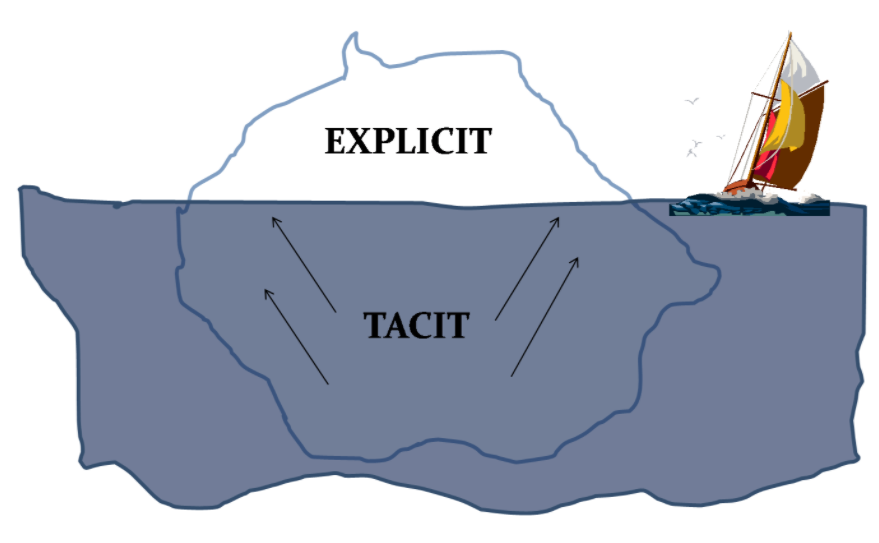Read & Discuss:
What is something that you have done so often that you don’t think about how to do it?
 As the image of the iceberg conveys, a good deal of what we know is tacit rather than explicit knowledge – knowledge that is below the surface of our conscious awareness. When, for example, is the last time (outside of a yoga class) that you thought about how to breathe or how to balance on your feet?
As the image of the iceberg conveys, a good deal of what we know is tacit rather than explicit knowledge – knowledge that is below the surface of our conscious awareness. When, for example, is the last time (outside of a yoga class) that you thought about how to breathe or how to balance on your feet?
Tacit knowledge is not just our unconscious motor responses – it also includes the basic knowledge and skills we long ago mastered on our way to developing expertise. You have likely encountered the challenge of articulating your tacit knowledge if you have ever had a hard time explaining to a beginner how to do your job, play your instrument, drive a car, make your special recipe, or do some other thing you have perfected over time.
Learning to articulate – to name and claim – your tacit knowledge will make you more effective because you will be better able to deliberately use and communicate that knowledge.
For example, some people assume that they are “not good at school” because they had negative prior experiences in school. However, over time, these individuals have developed habits, skills and gained knowledge from experiences outside of school that, when recognized and used for learning, make them excellent students.
At work, the ability to articulate your tacit knowledge will not only allow you to demonstrate strengths and capabilities that may have previously gone unrecognized, it will also allow you to better contribute to the collective knowledge of your organization.
In the learning circle this week and next, you will practice several different ways to surface your tacit knowledge.